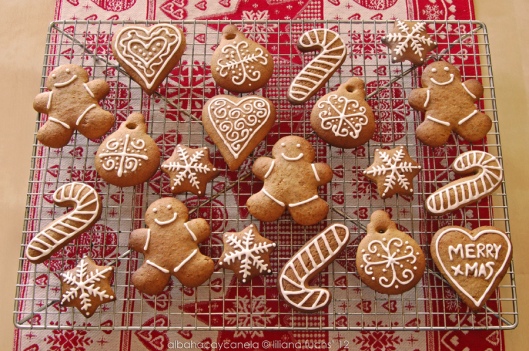Tags

Or rather the Christmas cookies and bars and squares and tarts and even more cookies . . . If your house is anything like mine at Christmastime it is filled with all sorts of delectable treats with cookies being predominate among them. So why cookies? Is this an ancient tradition or something more recent? And where did they come from anyway?
It is apparent that cookies, or test cakes as they were, date as far back as the 7th century. Cookies were used literally as a small cake to test an oven’s temperature. Interestingly historians believe they originated in or around what is now Iran and spread from there. Overtime cookies became important in the celebration of special events and were often used throughout many ancient festivals. There were predominately used during the Solstice Festival which took place near the end of December and which has now been replaced with our modern Christmas.
Interestingly the cookies made in the middle ages resemble closely the  cookies we still make today. They used spices such as nutmeg, ginger, cinnamon and black pepper and were often sweetened with molasses or honey. In addition, apricots and dates and other available dried fruits were added to the batter. Some families would have used sugar and butter in place of the molasses, however, those ingredients were still quite expensive and therefore only on very special occasions would treats with sugar have been used.
cookies we still make today. They used spices such as nutmeg, ginger, cinnamon and black pepper and were often sweetened with molasses or honey. In addition, apricots and dates and other available dried fruits were added to the batter. Some families would have used sugar and butter in place of the molasses, however, those ingredients were still quite expensive and therefore only on very special occasions would treats with sugar have been used.
In addition to the creativity and portability of the cookies, or perhaps because of it, cookies were perfect to share with friends and acquaintances. It was not uncommon, even in the middle ages, for friends  to exchange cookies as gifts. Cookies were also very good food for traveling and as more people began to travel at this time, cookies became a staple. Possibly because of this travel Cookies were brought to Europe and by the 1500s were a part of their food tradition. We have cookies such as Spritz and Gingerbread (called Lebkuchen from the Germans), Papparkako from Sweden and Krumkake from the Norwegians. A little later on, the Sugar Cookie was created from English traditions. To facilitate creativity and expand upon the standard square or round cookie, the Dutch and Germans began bending metals to use as cutters and cookies started to take on unique shapes. The cutters turned the cookies into bells, trees, flowers, stars and angels; some done elaborately and others done more simply. Here are some recipes for cookies made back in the 1700 and 1800s.
to exchange cookies as gifts. Cookies were also very good food for traveling and as more people began to travel at this time, cookies became a staple. Possibly because of this travel Cookies were brought to Europe and by the 1500s were a part of their food tradition. We have cookies such as Spritz and Gingerbread (called Lebkuchen from the Germans), Papparkako from Sweden and Krumkake from the Norwegians. A little later on, the Sugar Cookie was created from English traditions. To facilitate creativity and expand upon the standard square or round cookie, the Dutch and Germans began bending metals to use as cutters and cookies started to take on unique shapes. The cutters turned the cookies into bells, trees, flowers, stars and angels; some done elaborately and others done more simply. Here are some recipes for cookies made back in the 1700 and 1800s.

As cookies came to North America, techniques changed again and by the 1940s refrigerator or overnight cookies became popular as all one had to do was to pat the dough into a roll, chill it overnight and then slice and bake the cookies the next day. Decorated cookies were around from the start, however, the more common use and availability of sugar freed people to experiment with different techniques and food items. Here are some cookies made to look like stained glass.
There is more, however, to the Christmas cookie than just taste, texture and shape. There is all important tradition of actually making the cookies. In many families there are recipes that have been past down from one generation to the next and are included at Christmas every year. Some people can recall baking cookies with their moms and grandmas growing up and then having their own children and sharing that same experience with them. Often groups of people, family or not, will gather together for a few hours to bake and decorate cookies for the holiday season. This becomes a time  of sharing and camaraderie and strengthening relationships and often can be quite fun! As we approach the Christmas season make some time to share with those around you, whether through something as simple as the gift of a small tin of cookies or getting together to spend time in the kitchen creating fond memories and maybe some flavourful cookies as well.
of sharing and camaraderie and strengthening relationships and often can be quite fun! As we approach the Christmas season make some time to share with those around you, whether through something as simple as the gift of a small tin of cookies or getting together to spend time in the kitchen creating fond memories and maybe some flavourful cookies as well.
We have sweet fellowship together.
Encouraging each other to love and good works.
Ps 55.14, I Thess 5.11, Heb 10.24

